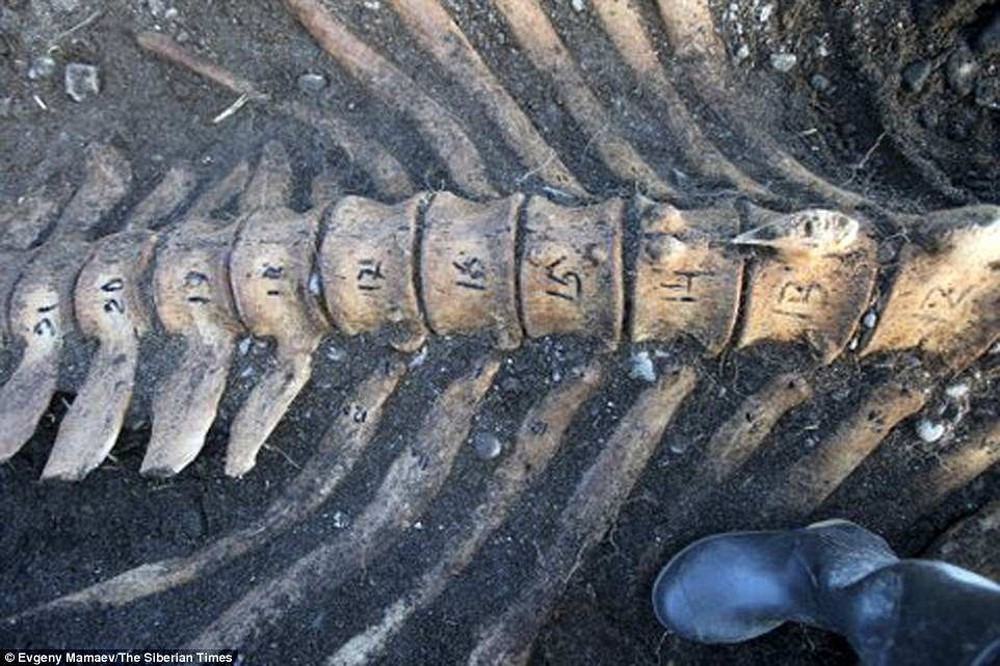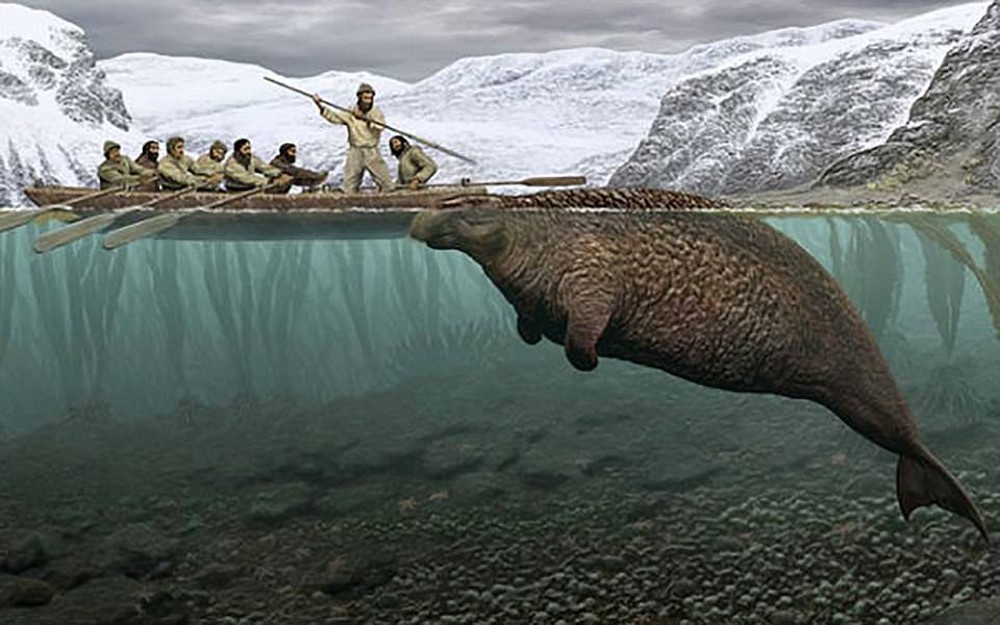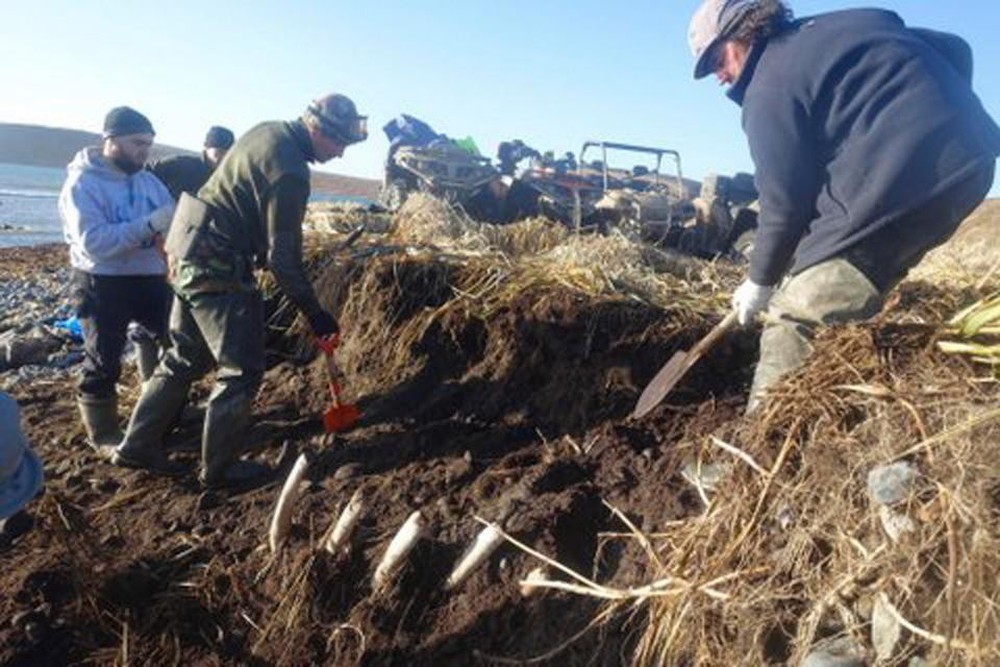The “giant” headless skeleton on the beach on a remote Russian island turned out to belong to an ancient sea monster, hunted to extinction by humans.
Accordingly, nature conservation officers found the headless skeleton of a Steller’s sea cow on the island of the Commander archipelago in the Bering Sea (Russia). The mysterious sea monster about 6 meters long, is thought to have become extinct in the 18th century due to being hunted by groups of hunters using harpoons.

The skeleton of this creature is really huge. Nature conservation inspector Maria Shitova saw its ribs protrude above the shore like a row of fences.
After eight hours of digging, experts say this is a rare find of a sea cow , a “monster” that was once endemic to the waters of the islands between Russia and the United States. Alaska.

Specifically, Inspector Shitova and his colleagues found 45 vertebrae, 27 ribs, a left shoulder blade and other bones of the headless sea monster.
According to experts, sea cows grow up to 10 meters in length and weigh up to 10 tons. They are adept swimmers and spend most of their day grazing on the seafloor using their horn pads for chewing.
According to records and records of this sea monster, the giant sea cows belong to a group of mammals called Sirenia, whose name is taken after the name of the mythical mermaids. Greek.

The population of this animal has been severely reduced and only a few remained in a few islands in the Bering Sea (Russia) in the 18th century. The giant manatee was named after the German explorer George Steller. , who first recorded their existence during a trip in 1741.
Steller’s team survived the harsh voyage by hunting sea cows that moved in herds. Reports say that one sea cow can feed 33 men for a month.

Explorer Steller said the fat layer up to 10cm thick of ancient sea cows tasted like almond oil. Therefore, rumors about the meat of this animal also quickly spread. According to historical records, the last sea cow was killed in 1768, which is about 27 years after they were discovered by modern humans.
The groups of hunters killed many sea cows, far exceeding the amount of food needed because they believed that the supply was limitless.
Therefore, scientists believe that hunting expeditions may have contributed to the extinction of these sea monsters.





